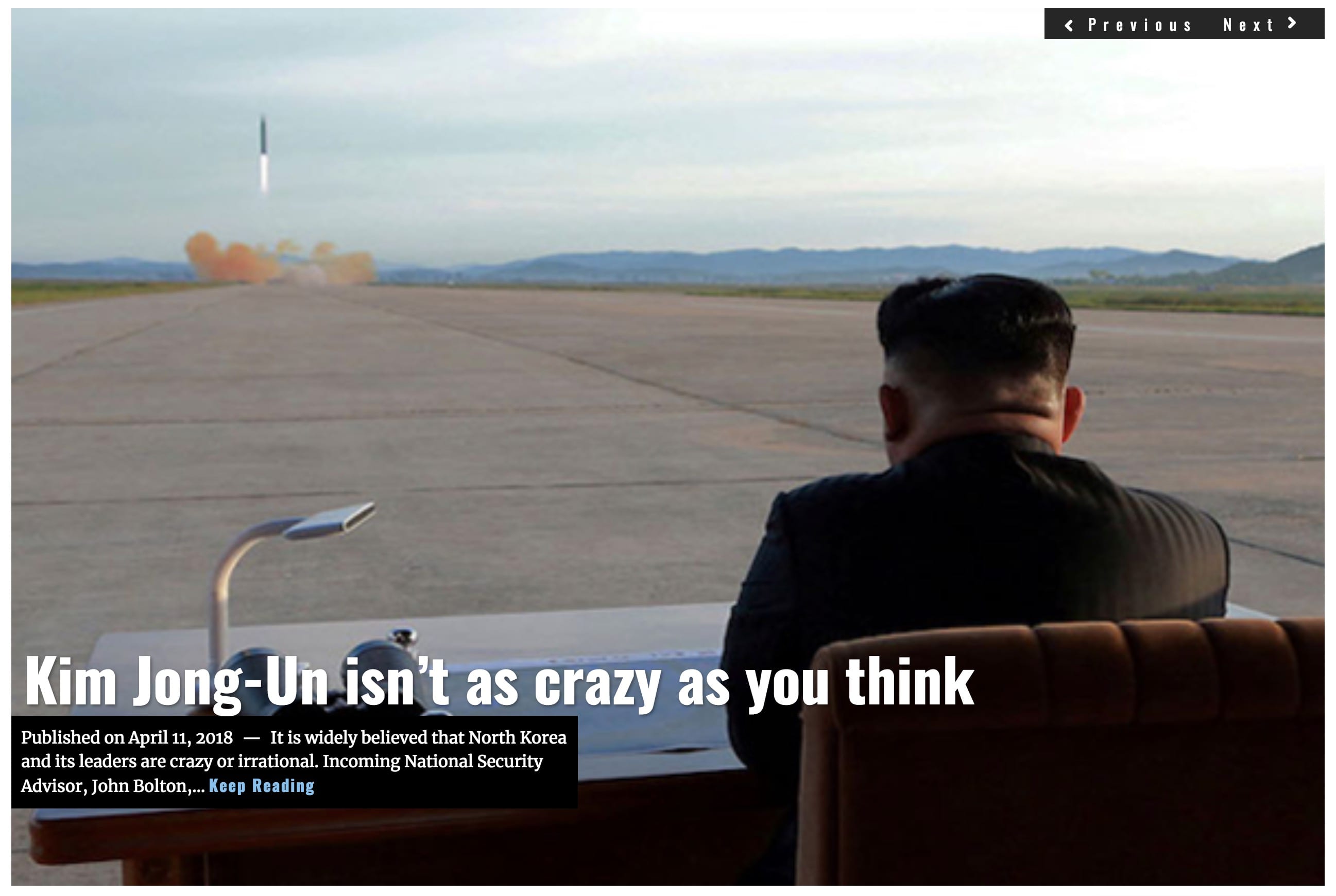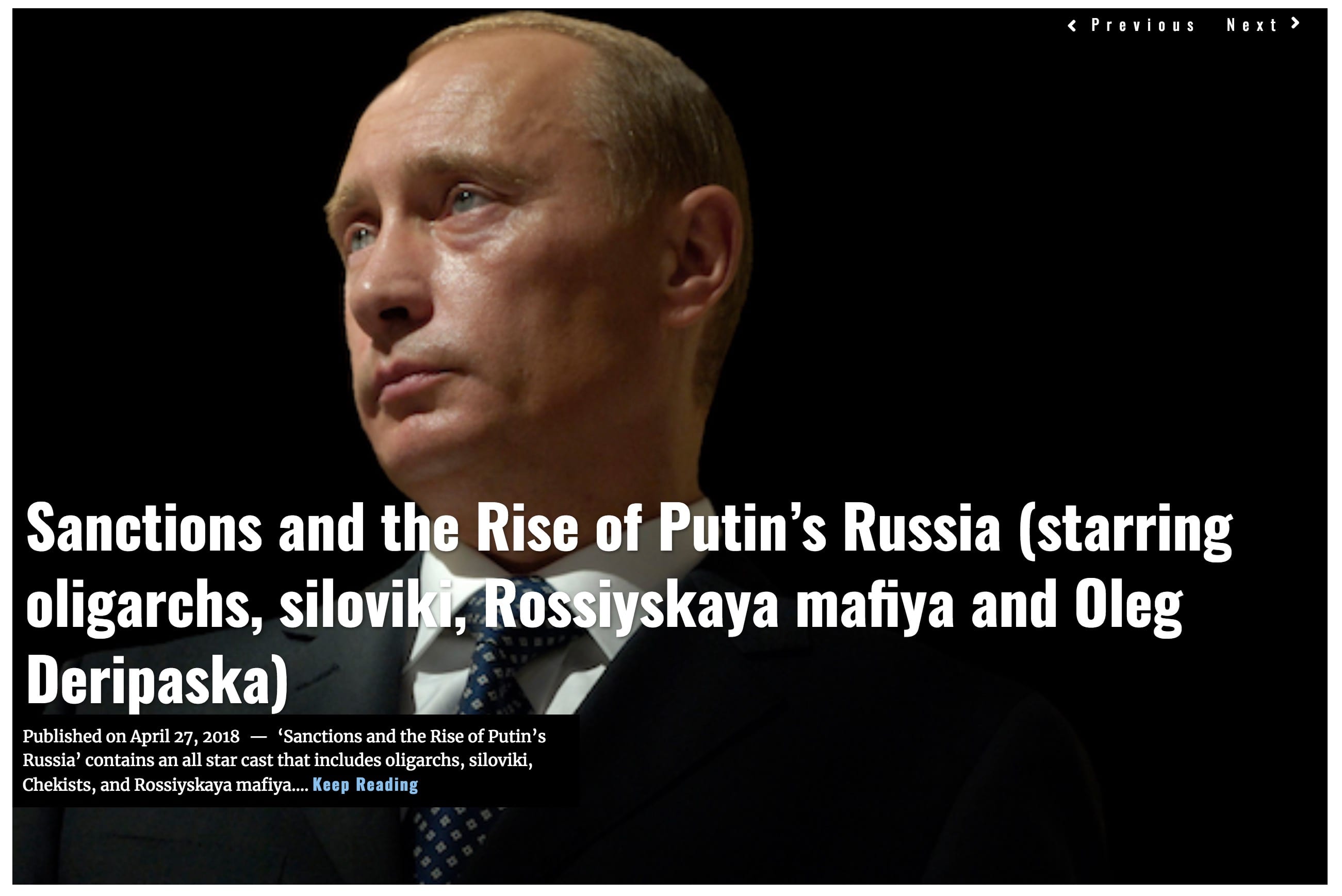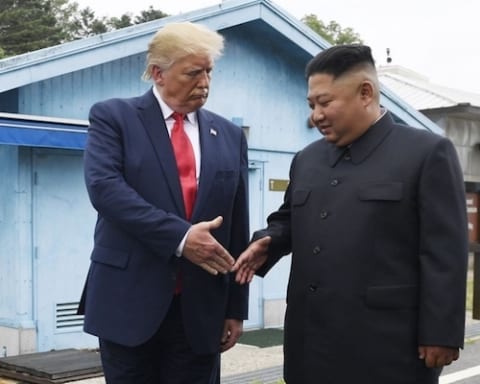The Pentagon’s National Defense Strategy called for the US to focus on countering China and Russia on the world stage. Yet, while past presidents have deviated from or even ignored the NDS, President Trump appears to be going in the exact opposite strategic direction.
In January of this year, the Pentagon revealed its new National Defense Strategy (NDS), a congressionally mandated review of America’s defense posture. The full National Defense Strategy is classified, but the Pentagon did release an 11 page unclassified summary of the document. The NDS makes clear that, while the US faces a variety of threats, the paramount challenge going forward is the rise of China and the re-emergence of Russia on the world stage and the return of great power competition. The NDS acknowledges the United States still has to deal with the threat from rogue states and terrorist groups, but it calls a shift in focus towards countering Chinese assertiveness in the Asia-Pacific and Russian aggression in Eastern Europe.
Great power rivalry, the NDS says, is back.
Yet, it doesn’t seem that the administration is following its own national defense strategy. In fact, while past presidents have deviated from or even ignored the NDS, President Trump appears to be going in the exact opposite strategic direction.
North Korea is not America’s primary security challenge in the Asia Pacific. China is.
The administration’s strategic incoherence was on display during the Singapore Trump-Kim summit, an event that followed more than a year of the President putting North Korea at the top of his foreign policy agenda. The Pentagon’s strategy calls for the United States to focus on countering China’s rise, yet the President has allowed North Korea to hijack his Asia policy. Worse, he has done so in a way that took the focus off Chinese aggression in the region while harming America’s relations with key allies.
First, North Korea is not America’s primary security challenge in the Asia Pacific. China is. North Korea is a rogue state that has managed to acquire nuclear weapons but cannot use them without inviting massive retaliation that would topple the regime. It remains a proliferation threat and needs to be contained and deterred, but putting North Korea at the center of America’s Asia strategy while China grows its economic influence and military power shows a failure to correctly prioritize.
For example, when China put anti-ship missiles in the South China Sea earlier this year, a move that dramatically alters the military balance there, the United States did nothing because it was distracted by its focus on summit diplomacy with North Korea.
Second, the President’s erratic shifts in policy damaged relations with Japan and South Korea, two of America’s most important allies in the region and key pillars of any program to contain China’s ambitions.
In 2017, the President terrified South Korean and Japanese leaders by playing a game of brinksmanship with Pyongyang that left them wondering if he would launch a destructive war that could have devastated their countries. Then suddenly in 2018, he launched into negotiations with North Korea that sidelined Seoul and Tokyo and made unilateral concessions after the Singapore summit (such as cancelling joint military exercises) without even consulting them. He left South Korean and Japanese leaders wondering if the United States might trade away their security to protect itself, a process called “decoupling.”
Yesterday, Defense Secretary James Mattis – who signed off on the NDS – had to reassure Seoul that the US will maintain current force levels and that “the US commitment to the Republic of Korea remains ironclad.”
A Trade War is Contrary to the Recommendations of the NDS
The damage caused by the choice to prioritize North Korea over China in security policy, has been further exacerbated by the decisions the United States has made on trade issues.
The NDS states, “By working together with allies and partners we amass the greatest possible strength for the long-term advancement of our interests, maintaining favorable balances of power that deter aggression and support the stability that generates economic growth.” It recommends that the US “expand” Indo-Pacific alliances and partnerships and “fortify” the Trans-Atlantic NATO Alliance.
The President withdrew from the Trans-Pacific Partnership (TPP) soon after taking office, a decision that harmed relations with key allies and cost the United States an opportunity to increase its economic influence. Meanwhile, China increased its efforts to establish economic primacy in Asia by continuing to push its “One Belt, One Road” initiative, a sweeping program to expand Chinese investment throughout Asia in the hopes that Chinese political influence will follow. China is also pushing its own trade pact to rival the TPP called the Regional Comprehensive Economic Partnership, or RCEP.
This week, South Korea advanced negotiations with China over a Korea-China free trade agreement (FTA), while in Japan, a survey highlighted fears where 70% of Japanese CEOs polled think the biggest risk of the global economy is the ‘Trade War’ between the US and China.
China is playing aggressively in the economic sphere of the great power rivalry with the United States. The United States, on the other hand, is hardly playing in the economic sphere at all and is instead pursuing short-sighted economic protectionism.
What About Russia?
The same storyline that emerged at the Singapore summit was also visible at the G7 meeting in Quebec earlier in the same week. Instead of bolstering relations with Western Europe and cementing a coalition that could contain Russia, the President opened the summit by complaining that Russia was being excluded from the meeting and finished the summit by re-igniting trade tensions with Canada.
This follows a long pattern of behavior that undermines the goal of containing Russia.
President Trump has watered down the impact of sanctions Congress imposed on Russia for their election meddling. He has defended Russia’s annexation of Crimea. He has questioned whether the United States would uphold its commitment to defend its European allies in the event of war. He has dismissed concerns about human rights under Putin. He withdrew from negotiations for a trade pact with the European Union.
The Pentagon sees Russia as a rival and a threat that is undermining America’s interests from Syria to the Baltic. The President sees Russia as a potential partner that has been misunderstood. The result is strategic incoherence.
The President does not follow the Pentagon’s national security strategy but the Pentagon continues to devote resources to building the military we would need to carry the strategy the President won’t follow.
In Europe and Asia, the United States has a stated policy of countering rival great powers Russia and China. But this is only our strategy on paper. In reality, the policy of the United States is to accommodate Russia while ignoring China to focus on rogue states.
This upside down foreign policy is strategic malpractice and reflects a broken decision making process.
John Ford, for Lima Charlie News
John Ford served as a Captain in the U.S. Army. John is a lawyer and an author who writes about the Middle East and Asia. You can follow him on twitter at @johndouglasford.
For up-to-date news, please follow Lima Charlie on twitter at @LimaCharlieNews
In case you missed it:

![Image Opinion | America’s Upside Down Foreign Policy [Lima Charlie News][Photo: Jonathan Ernst/Reuters]](https://limacharlienews.com/wp-content/uploads/2018/06/Opinion-America’s-Upside-Down-Foreign-Policy.jpg)



![The Art of Foreign Influence: The Russian Military Adviser [Lima Charlie News]](https://limacharlienews.com/wp-content/uploads/2019/06/The-Art-of-Foreign-Influence-The-Russian-Military-Adviser-480x384.png)
![Image Memorial Day may soon be a remembrance of democracy and those who had the courage to defend it [Lima Charlie News]](https://limacharlienews.com/wp-content/uploads/2018/05/Memorial-Day-may-soon-be-a-remembrance-of-democracy-and-those-who-had-the-courage-to-defend-it-Lima-Charlie-News-480x384.png)
![Image GailForce to Space Force: 'Make it so' - the Space Force debate continues [Lima Charlie News]](https://limacharlienews.com/wp-content/uploads/2019/05/Space-Force-01-480x384.png)


![Blossoming Russo-Turkish alliance leaves U.S., NATO behind [Lima Charlie News]](https://limacharlienews.com/wp-content/uploads/2019/07/Russia-Turkey-alliance-leaves-U.S.-NATO-behind-480x384.png)


![The Art of Foreign Influence: The Russian Military Adviser [Lima Charlie News]](https://limacharlienews.com/wp-content/uploads/2019/06/The-Art-of-Foreign-Influence-The-Russian-Military-Adviser-150x100.png)
![Image Memorial Day may soon be a remembrance of democracy and those who had the courage to defend it [Lima Charlie News]](https://limacharlienews.com/wp-content/uploads/2018/05/Memorial-Day-may-soon-be-a-remembrance-of-democracy-and-those-who-had-the-courage-to-defend-it-Lima-Charlie-News-150x100.png)